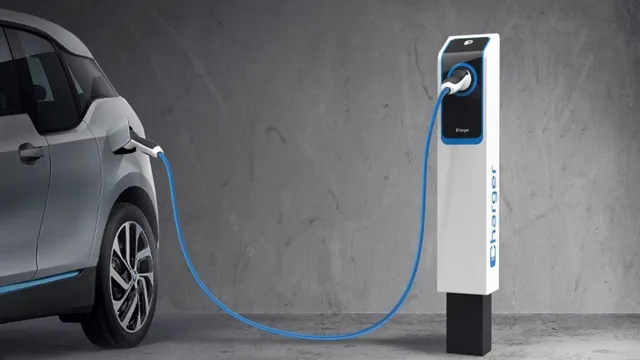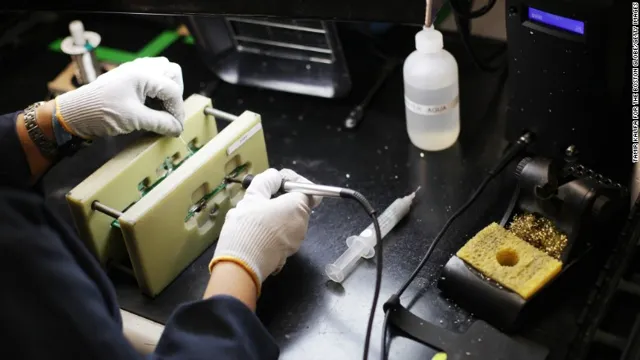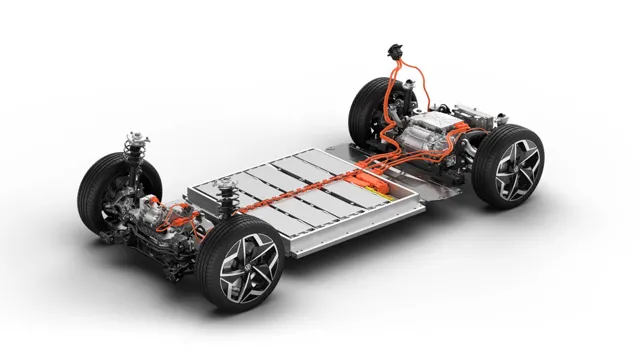Revamp your Ride with these DIY Electric Car Battery Hacks
If you’re an avid DIY-er and an eco-conscious individual, then building an electric car is the perfect project for you. One of the most important aspects of an electric vehicle is its battery. Without a proper battery, your electric car won’t be able to run for long.
Luckily, building your own electric car battery isn’t rocket science. In fact, with the right tools and some basic knowledge of electronics, you can easily build your very own DIY electric car battery. A DIY electric car battery is a battery that is assembled by an individual rather than a professional manufacturer.
Building your own battery pack allows for more customization, control over the cost, and the satisfaction of building your own electric car from scratch. You’ll be able to choose your own battery chemistries, sizes, configurations, and components. With a DIY electric car battery, the possibilities are endless.
However, before embarking on this project, there are a few things you need to consider. First and foremost, you need to determine the power requirements of your electric car. This will help you choose the appropriate battery size and configuration.
You’ll also need to understand the basics of battery chemistry, such as voltages, currents, and capacities. Fortunately, there are many online resources that can guide you through the process of building your own DIY electric car battery. You can find step-by-step tutorials, detailed guides, and helpful tips and tricks to make your project a success.
Plus, there are communities of like-minded individuals who are willing to share their knowledge and offer support. Building your own DIY electric car battery requires time, effort, and some technical knowledge. However, the end result is a fully functional, eco-friendly vehicle that you can be proud of.
Introduction to DIY Electric Car Batteries
DIY electric car batteries have become increasingly popular due to the rising demand for electric cars and the desire to reduce carbon emissions. Creating a DIY electric car battery involves sourcing individual cells, assembling them, and properly wiring the pack. One of the main advantages of building your electric car battery is that it allows for customization and potentially saves money compared to purchasing a pre-made battery pack.
However, constructing a DIY electric car battery requires knowledge of electrical engineering and proper safety precautions. It is crucial to ensure that the cells are properly balanced and meet the voltage and capacity requirements for the specific electric car. Overall, creating a DIY electric car battery offers both a sense of accomplishment and a sustainable transportation option.
Why Build Your Own Electric Car Battery?
Building your own electric car battery may seem like a daunting task, but it can be a worthwhile endeavor for those who are passionate about sustainability and the environment. DIY electric car batteries allow you to customize the battery to fit your specific needs and budget, as well as provide a sense of satisfaction in building something from scratch. Additionally, building your own electric car battery can often be more cost-effective than purchasing a pre-made battery, as long as you have the necessary knowledge and tools.
By taking the time to build your own electric car battery, you can play a part in reducing greenhouse emissions and promoting a cleaner, greener future. So why not give it a try and see the benefits of a DIY electric car battery for yourself?
Safety Concerns to Consider
DIY electric car batteries If you’re thinking about creating your own electric car, then you’ll need to consider the safety concerns that come with building a DIY electric car battery. While a DIY electric car battery can be a more affordable option than purchasing one pre-made, it does require a significant amount of technical knowledge to ensure that it’s both safe and effective. One of the biggest safety concerns to consider is the high voltage of the battery.
If the battery is not built with the proper safety measures in place, it can pose a serious risk of electrocution or fire. Additionally, it’s important to ensure that the battery is mounted securely to prevent it from shifting during operation. Building a DIY electric car battery requires attention to detail and a thorough understanding of the risks involved.
However, with careful planning and execution, a DIY electric car battery can be a safe and effective option for powering your electric vehicle.
Choosing Your Battery Components
When it comes to building a DIY electric car battery, choosing the right components is essential. One key component is the battery cells themselves, which come in a variety of chemistries such as lithium-ion, nickel-metal hydride, and lead-acid. Each chemistry has its own tradeoffs in terms of cost, energy density, and safety, so it’s important to do your research and choose the chemistry that best fits your needs.
Beyond the cells, you’ll also need a battery management system (BMS) to monitor and balance the cells, and a charger to keep the battery topped up. Again, there are many options available, so be sure to choose components that are compatible with your specific battery chemistry. By taking the time to choose the right components for your DIY electric car battery, you can ensure optimal performance and safety.
Battery Cells and Chemistry Options
Choosing the right battery components is an important decision when it comes to powering your device efficiently and effectively. One of the biggest considerations is the type of battery cell and the chemistry that goes into it. There are several options available, including lithium-ion, nickel-metal hydride, and lead-acid.
Each type has its own unique characteristics and benefits. For example, lithium-ion batteries are known for their high energy density and long lifespan, while lead-acid batteries are more cost-effective and suitable for high-power applications. It’s important to consider your device’s power needs, usage habits, and budget when choosing the right battery cell and chemistry.
Don’t forget to also consider the proper charging and maintenance requirements to ensure your battery lasts as long as possible. By taking all of these factors into account, you can make an informed decision and choose the battery components that will best suit your device’s needs.
Selecting Charging Equipment
Selecting the right charging equipment is crucial when it comes to ensuring that your battery is performing at its best. This involves choosing the appropriate components such as the battery charger, cables, connectors, and adapters. It is vital to consider the type and size of your battery when selecting charging equipment.
For instance, a lead-acid battery requires a different charging equipment than a lithium-ion battery. You also need to consider the charging speed, current, and voltage requirements when choosing your charging equipment. The right charging equipment not only ensures efficient charging but also safeguards your battery against damage due to overcharging or undercharging.
So, take your time to research and choose the right charging equipment that suits your battery needs and enhances its longevity and performance.
Assembling Your Electric Car Battery
Are you considering building your own electric car battery? If so, there are a few key steps to keep in mind. First and foremost, it’s essential to choose high-quality components that are compatible with your vehicle. You’ll need to select your battery cells, determine the voltage and capacity you require, and decide on a battery management system to regulate and protect the battery.
Once you have all the necessary components, it’s time to start assembling your battery. DIY electric car battery assembly can be a complex process, so it’s best to follow detailed instructions carefully, especially when it comes to wiring and safety precautions. Finally, you’ll need to test your battery to ensure it’s functioning correctly and efficiently.
Although building your electric car battery can be a challenging and time-consuming endeavor, it can also be a rewarding DIY project that saves you money and helps you reduce your carbon footprint. So, roll up your sleeves, dig in, and see what you can accomplish!
Step-by-Step Instructions for Building a Battery Pack
Building a battery pack for your electric car can be a rewarding experience, giving you the satisfaction of knowing that you built a crucial component of your vehicle with your own hands. To get started, you will need to gather all the necessary tools and materials, including a selection of lithium-ion battery cells, a battery management system, a spot welder, and various other essentials. Once you have everything you need, you can start assembling the battery pack, connecting each cell in series and parallel to reach the desired voltage and capacity.
It’s important to follow the manufacturer’s specifications closely and take safety precautions such as wearing protective gear and working in a well-ventilated area. With patience and attention to detail, you can create a reliable and efficient battery pack that will power your electric car for many years to come.
Common Mistakes to Avoid
Assembling the battery for your electric car can be a complex process, but it’s still vital to avoid certain common mistakes. First and foremost, it’s crucial to follow all safety guidelines and precautions to prevent any accidents. This includes using the appropriate gear, working in a well-ventilated area, and being mindful of electrostatic discharge.
It’s also important to double-check the polarity of each cell before assembling them to ensure they are in the correct order. Additionally, make sure to use high-quality connectors that are compatible with your battery’s specifications. Using substandard components can result in insufficient current flow or even damage to your car’s electrical system.
Finally, be mindful of the recommended charging and discharging rates when using your electric car to ensure the longevity of your battery. By adhering to these guidelines, you’ll be able to safely and effectively assemble your electric car’s battery for optimal performance and longevity.
Maintaining Your Electric Car Battery
Maintaining the battery of your electric car is essential for ensuring its longevity and optimal performance. Though it’s recommended to seek professional help for significant maintenance tasks, there are a few DIY actions you can take to care for your battery. Firstly, you should regularly clean your battery’s terminals to prevent corrosion and buildup of dirt.
A mix of baking soda and water is an effective and affordable solution for cleaning. Additionally, it’s important to keep the battery’s charge level between 20% and 80% to avoid overcharging or deep discharging. Lastly, storing the EV battery in a cool and dry place when not in use can prevent damage from high temperatures and humidity.
These simple DIY steps can go a long way in maintaining your electric car’s battery life, saving you money in the long run, and helping you reduce your carbon footprint.
Tips for Keeping Your Battery Healthy
Maintaining an electric car battery can be a daunting task, but with proper care, you can keep it healthy for a long time. One essential tip to remember is to avoid overcharging your battery. Continuous charging beyond its capacity can damage the cells and shorten its lifespan.
It’s best to charge your battery up to 80% and avoid going beyond 100% where possible. Secondly, always ensure that you keep the battery clean and dry. Dirt, moisture, and debris can cause corrosion and affect its performance.
Regularly inspect your battery and clean it with a damp cloth and mild detergent. Lastly, maintain a consistent temperature range for your battery to operate in. High temperatures can damage the battery, while low temperatures can reduce its efficiency.
Park your car in shaded areas or garages, and avoid exposing it to extreme weather conditions. By implementing these simple tips, you can maintain your electric car battery and ensure that it provides optimal performance for years to come.
How to Troubleshoot Battery Issues
Maintaining Electric Car Battery One of the critical components of an electric car is the battery, and it is vital to maintain it properly. Neglecting your car battery leads to issues in the long run, such as poor performance, reduced range, and an expensive repair bill. To keep your electric car battery at optimal performance, consider charging it smartly, avoiding quick charging, and keeping the battery cool.
It is essential to keep an eye on the battery temperature and consider investing in a thermal management system. Additionally, ensure that the battery cells are balanced by taking your electric car for regular check-ups and servicing. Remember, proper care of your electric car battery prolongs its lifespan and saves you money in the long term.
Conclusion and Next Steps
In the world of DIY electric cars, the battery is the heart that keeps everything running smoothly. Like the perfect wingman, it provides the necessary energy and power to keep you cruising along. So whether you’re looking to save the environment, save some cash, or just impress your friends with your handy skills, building your own electric car battery is a worthwhile endeavor.
Just remember: the road may be full of twists and turns, but with a reliable battery, you’ll always be in control!”
FAQs
What are the components required for building a DIY electric car battery?
To build a DIY electric car battery, you will need a battery management system, lithium-ion battery cells, a battery enclosure, and a battery charger.
How long does it take to charge a DIY electric car battery?
The charging time for a DIY electric car battery depends on the battery capacity, charging rate, and the charger used. Typically, charging can take anywhere from 2 to 8 hours.
Can I install a DIY electric car battery in any car model?
Installing a DIY electric car battery depends on the car model you are working with. Some models may need modifications to the car’s wiring, suspension, and braking system to fit the battery. It is always recommended to seek professional help.
How much does it cost to build a DIY electric car battery?
The cost of building a DIY electric car battery varies based on the battery capacity, components used, and the complexity of the installation. It can range from a few hundred to several thousand dollars.





